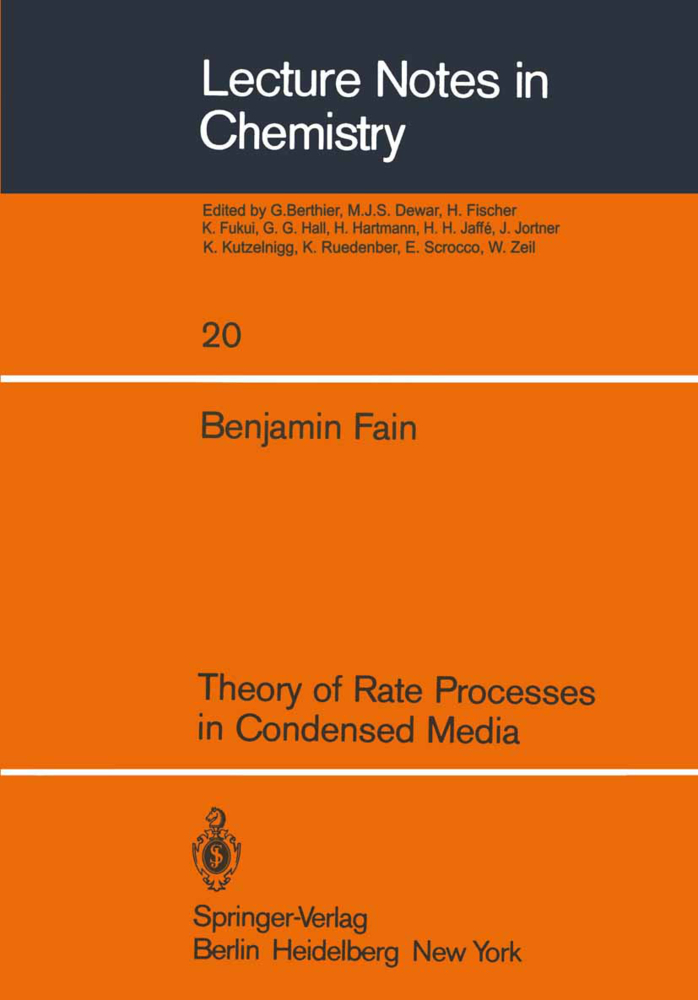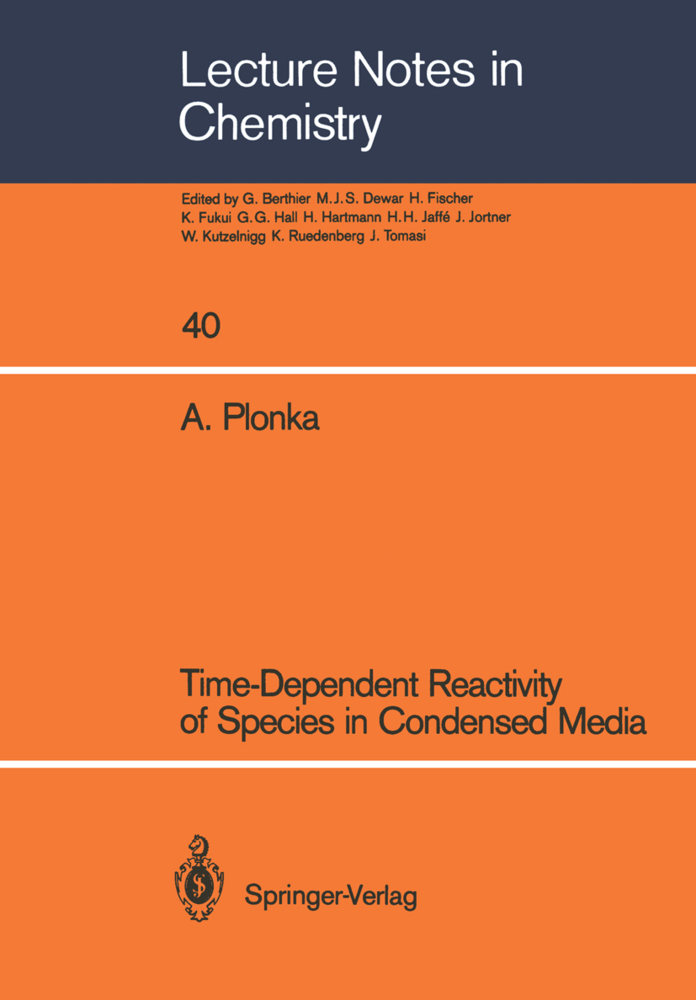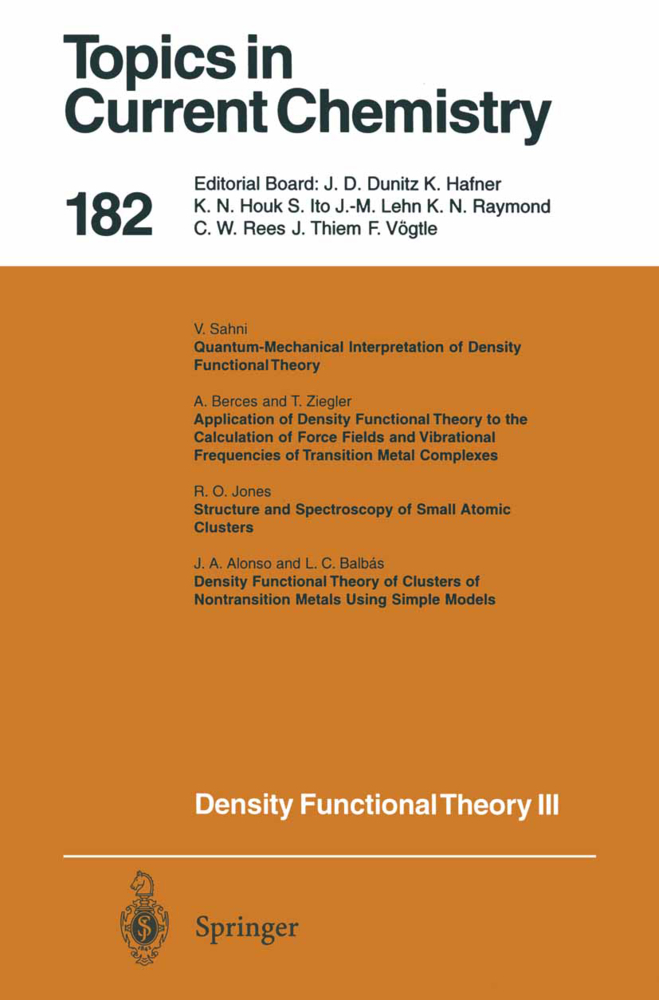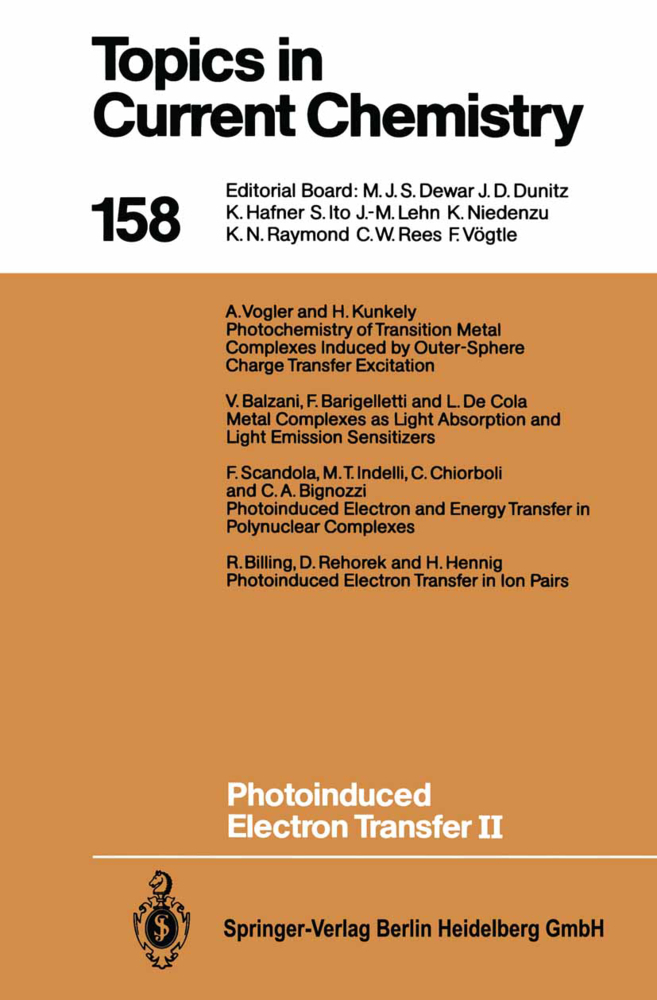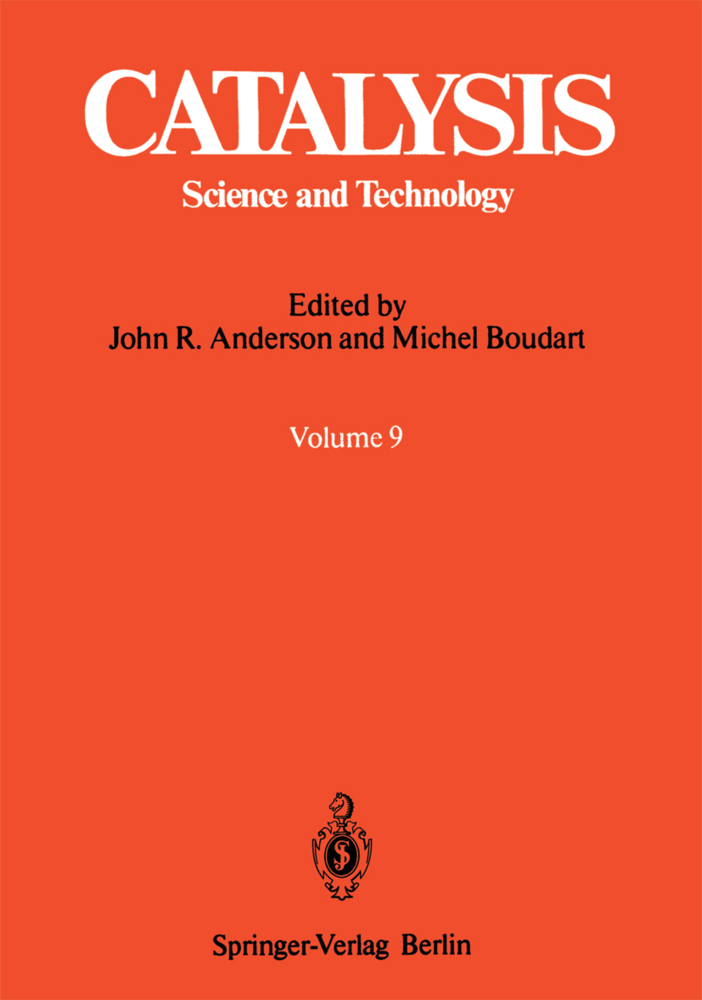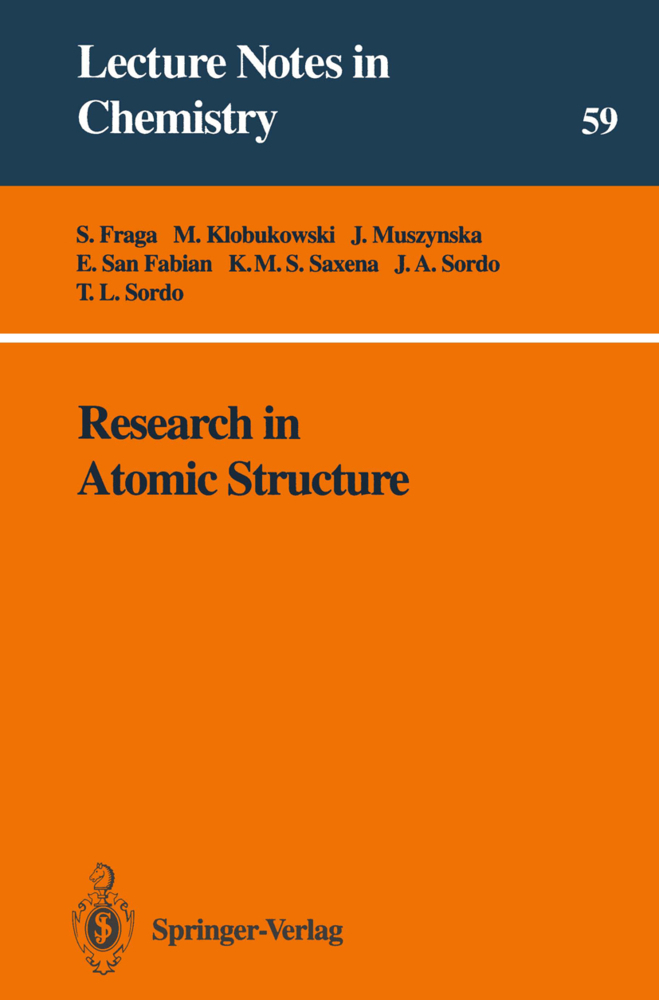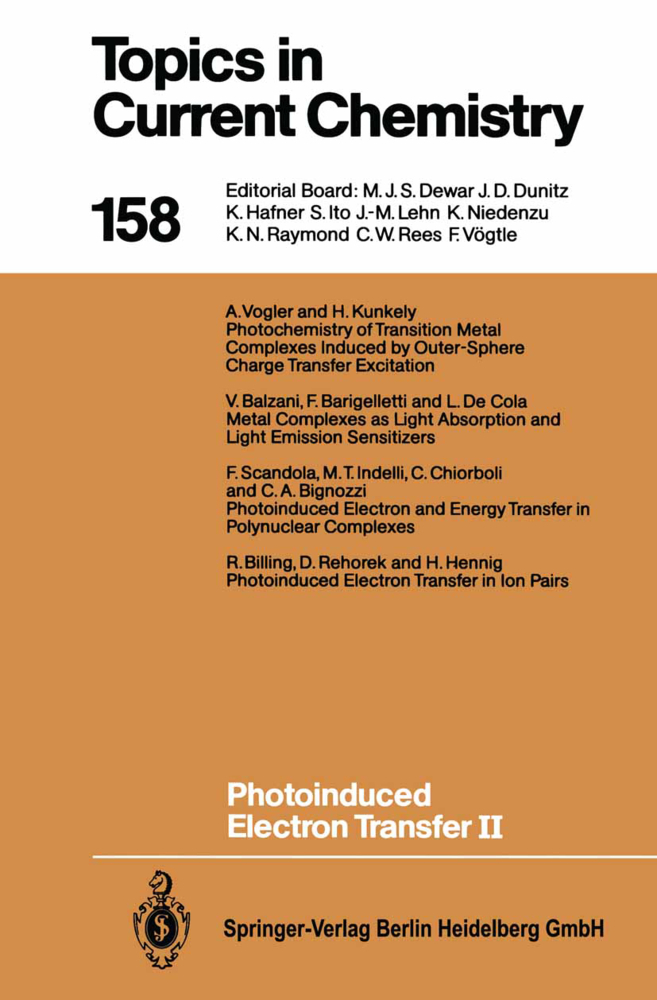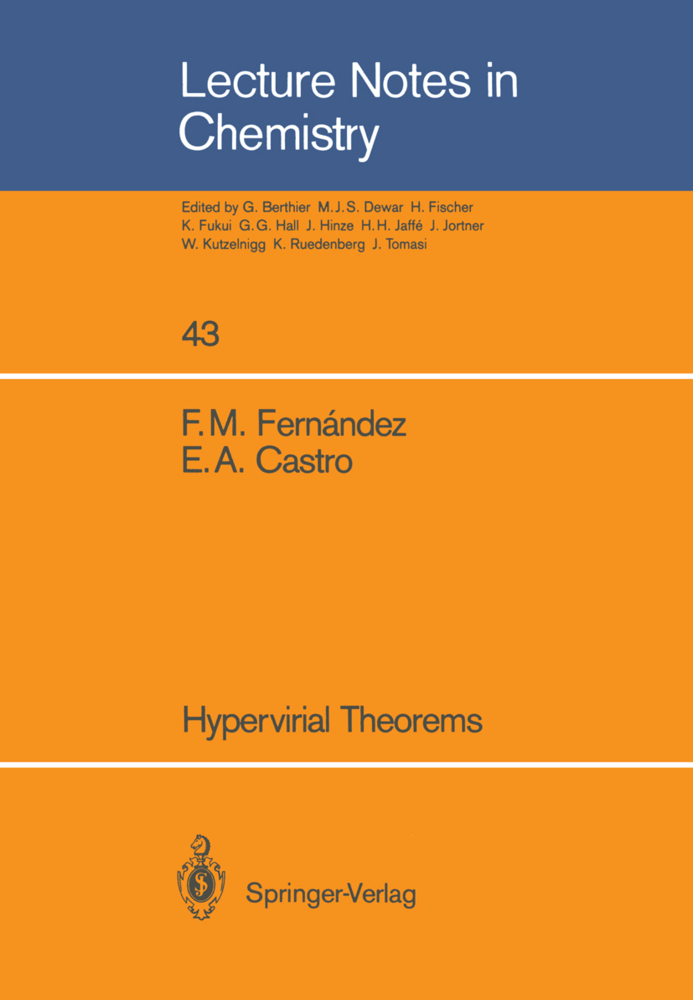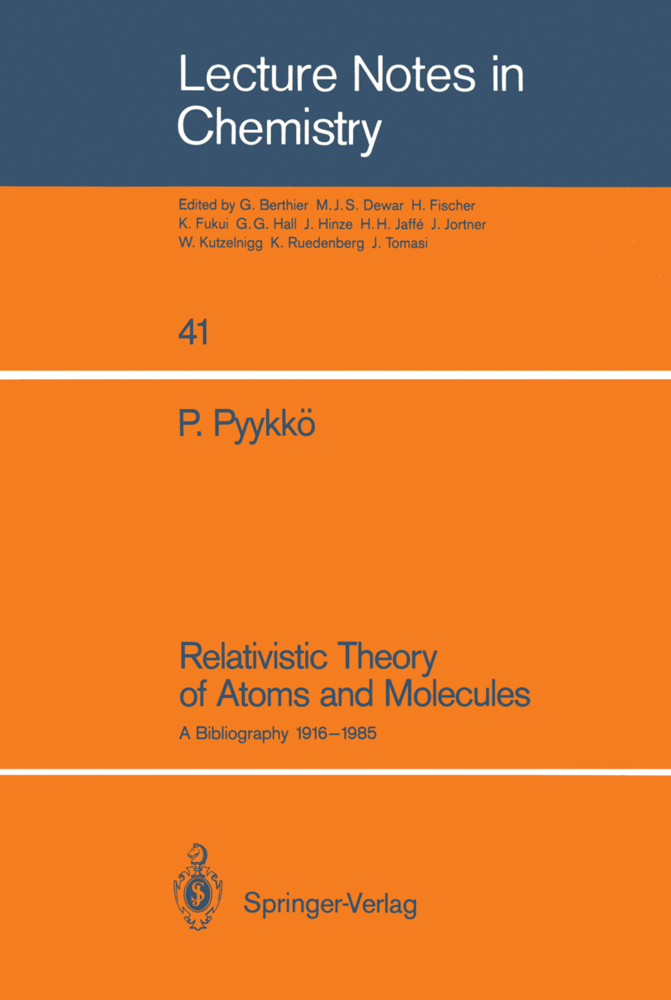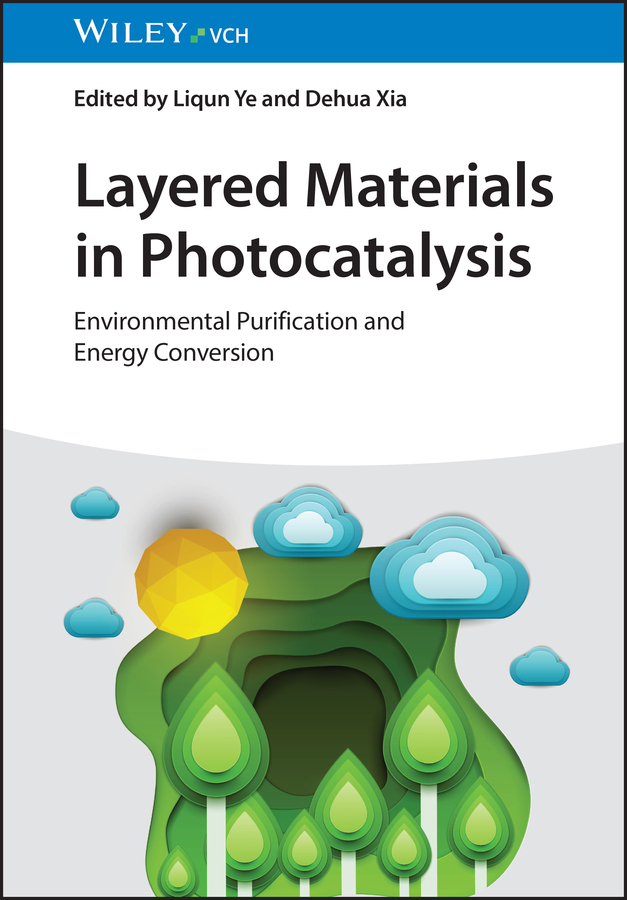Theory of Rate Processes in Condensed Media
Theory of Rate Processes in Condensed Media
A wide range of important physical and chemical phenomena may be named by the same title: Rate processes in condensed media. They have the same underlying physics and mathematics. To these phenomena belong: 1) Small polaron motion [a] 2) Electron transfer between ions in solutions [b] and in photosynthetic centers [c]. 3) Electronic energy transfer between molecules or ions in solids and in liquids [d]. 4) Enzymatic catalysis [e] 5) Group transfer in biological systems [fl. 6) Electron-hole recombination in semiconductors [g]. 7) Non-radiative electronic relaxation in ionic centers Ih] and in impurity states in insulators [i]. 8) Recombination in amorphous solids [j]. 9) Radiationless transitions in large molecules [k]. At present a unified theoretical and conceptual framework exists for description and understanding of all these diverse phenomena. Our aim in writing this work is to introduce the student and the research worker in chemical physics to the main aspects of the conceptual framework of rate processes in condensed media. There exists an extensive literature devoted to various rate processes in condensed media. Among recent works, the books of Levine and Jortner [1], Fong [m] and Ulstrup [n] should be mentioned. The existence of this literature enables us to concentrate on the major theoretical aspects, omitting description and presentation of experimental data. We tried to make our work self-contained. Almost all the information necessary for reading the book is included. References used in the work by no means cover the literature on the subject.
1.2 Two simple quantum-mechanical systems
1.3 Transition probability per unit time. Master equations. General properties of irreversible motion
1.4 The Born-Oppenheimer approximation. Phonons. Phonon-phonon interaction and relaxation
II Basic Processes and Models
2.1 Adiabatic and non-adiabatic transitions
2.2 Adiabatic transitions. Tunneling.
2.3 Non-adiabatic transitions. Landau-Zener transition
2.4 Electron transfer
2.5 Energy transfer
III The Equation of Motion
3.1 Derivation of master equations from von Neumann equation
3.2 Equations for density matrix of dynamic subsystem
3.3 Master equations for dynamic subsystem
IV Calculation of Rate Coefficients in Various Temperature Regions
4.1 Equation of motion describing electron transfer
4.2 Calculation of rate coefficients by the saddle-point method
4.3 Integral equation for non-radiative transition rates
4.4 Symmetric case of zero energy gap. Temperature dependence
V Equations of Motion at Zero and Low Temperature Range
5.1 Equation of motion in the case when the interaction energy V is not a small parameter
5.2 Validity conditions of perturbative approach
VI Adiabatic Rate Processes
6.1 Tunneling in condensed media
6.2 Overcoming the potential barrier
6.3 General features of adiabatic rate processes
VII Competition Between Electronic and Vibrational Relaxations
7.1 Master equations describing competition between electronic and vibrational relaxations
7.2 Master equation approach to non-adiabatic rate processes
VIII Concluding Remarks
8.1 General quantum mechanical analysis
8.2 Hierarchy of equations of motion
8.3 Models
References.
I Basic Quantum Mechanical Equipment
1.1 Basic concepts of quantum theory1.2 Two simple quantum-mechanical systems
1.3 Transition probability per unit time. Master equations. General properties of irreversible motion
1.4 The Born-Oppenheimer approximation. Phonons. Phonon-phonon interaction and relaxation
II Basic Processes and Models
2.1 Adiabatic and non-adiabatic transitions
2.2 Adiabatic transitions. Tunneling.
2.3 Non-adiabatic transitions. Landau-Zener transition
2.4 Electron transfer
2.5 Energy transfer
III The Equation of Motion
3.1 Derivation of master equations from von Neumann equation
3.2 Equations for density matrix of dynamic subsystem
3.3 Master equations for dynamic subsystem
IV Calculation of Rate Coefficients in Various Temperature Regions
4.1 Equation of motion describing electron transfer
4.2 Calculation of rate coefficients by the saddle-point method
4.3 Integral equation for non-radiative transition rates
4.4 Symmetric case of zero energy gap. Temperature dependence
V Equations of Motion at Zero and Low Temperature Range
5.1 Equation of motion in the case when the interaction energy V is not a small parameter
5.2 Validity conditions of perturbative approach
VI Adiabatic Rate Processes
6.1 Tunneling in condensed media
6.2 Overcoming the potential barrier
6.3 General features of adiabatic rate processes
VII Competition Between Electronic and Vibrational Relaxations
7.1 Master equations describing competition between electronic and vibrational relaxations
7.2 Master equation approach to non-adiabatic rate processes
VIII Concluding Remarks
8.1 General quantum mechanical analysis
8.2 Hierarchy of equations of motion
8.3 Models
References.
Fain, B.
| ISBN | 978-3-540-10249-6 |
|---|---|
| Artikelnummer | 9783540102496 |
| Medientyp | Buch |
| Copyrightjahr | 1980 |
| Verlag | Springer, Berlin |
| Umfang | VI, 168 Seiten |
| Abbildungen | VI, 168 p. |
| Sprache | Englisch |

